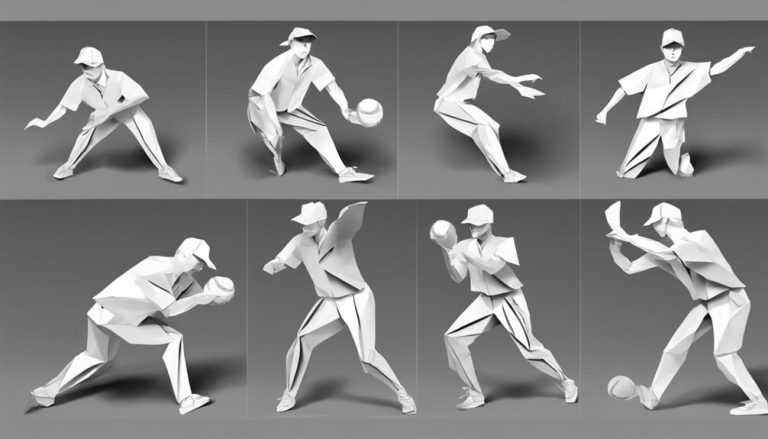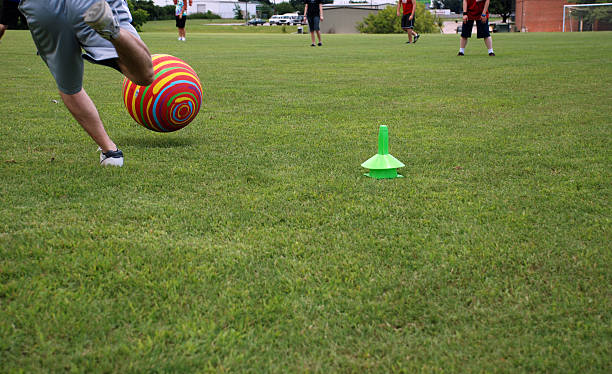General Rules of Mountain Biking
Are you ready to hit the trails with confidence and skill? When it comes to mountain biking, knowing the essential rules can make all the difference between an enjoyable ride and a potentially risky adventure. From necessary safety gear to trail etiquette, there are key points every rider should keep in mind. But what are the critical elements that can elevate your mountain biking experience to the next level? Stay tuned to uncover the necessary guidelines that will enhance your time on the trails.
Essential Safety Gear
To guarantee your safety while mountain biking, gear up with essential safety equipment before hitting the trails. Helmet protection is the most critical piece of gear you should never ride without. Your helmet is your shield, your safeguard against unforeseen obstacles and potential accidents. Make sure your helmet fits snugly and is in good condition, free from any cracks or damage. It's not just about following the rules; it's about valuing your well-being and giving yourself the freedom to fully enjoy the ride.
When it comes to your gear checklist, there are a few other items that should always be on your radar. Protective eyewear is essential to shield your eyes from dust, branches, and any debris that may come your way. Gloves are not just for comfort but also for grip and protection in case of a fall. Proper footwear is key to maintaining control and stability on the pedals. Additionally, knee and elbow pads can provide that extra layer of protection for those more daring trails.
Trail Etiquette
As you hit the mountain biking trails, remember to show respect and consideration for fellow riders. Yield to those climbing uphill, giving them the right of way, and always stay on designated trails to protect the environment. Following these simple trail etiquette rules guarantees a safe and enjoyable experience for everyone out on the trails.
Yield to Uphill Riders
When encountering uphill riders while mountain biking, always yield to them to guarantee a smoother and safer experience for everyone on the trail. Uphill challenges can be demanding, requiring focus and energy. By yielding to those riding uphill, you show respect and understanding of their efforts. Trail camaraderie is built on mutual respect and consideration for fellow riders. Here are four key reasons why yielding to uphill riders is vital:
- Uphill riders have momentum to maintain, making it harder for them to stop suddenly.
- Yielding promotes a positive trail culture and fosters a sense of community among riders.
- Uphill riders may be in a lower gear and less able to quickly navigate around you.
- It ensures a safer and more enjoyable experience for everyone on the trail.
Stay on Designated Trails
Make sure to stick to the designated trails while mountain biking for the safety of yourself and others on the trail. Riding off-trail can lead to erosion, damage to vegetation, and disturbance to wildlife habitats. By staying on designated trails, you are not only guaranteeing your safety but also contributing to trail preservation and minimizing the environmental impact of mountain biking. It is vital to respect the natural environment and the rules set in place to protect it. Riding off-trail can harm ecosystems and disrupt the balance of nature. Let's all do our part in maintaining the beauty of the trails for future generations to enjoy.
| Benefits of Staying on Designated Trails | Reasons to Avoid Off-Trail Riding |
|---|---|
| Protects vegetation and wildlife habitats | Reduces erosion and trail damage |
| Preserves the natural beauty of the area | Minimizes environmental impact |
| Ensures trail sustainability | Respects trail regulations |
Bike Maintenance Tips
Alright, fellow rider, when it comes to conquering those trails, one thing you can't overlook is your bike's maintenance. Having an essential tool kit at hand can be a true lifesaver when you're out there facing the elements. And remember, regular chain lubrication is key to keeping your ride smooth and efficient.
Essential Tool Kit
Having the right tools in your essential kit is paramount for every mountain biker looking to maintain their bike in top condition. Here are four must-have items for your toolkit:
- Multi-tool: A compact multi-tool is essential for on-the-go adjustments and repairs, including brake adjustments.
- Tire levers and patch kit: Be prepared for unexpected punctures with tire repair essentials like tire levers and a patch kit.
- Chain tool: A chain tool can help you fix chain issues quickly, ensuring a smooth ride.
- Shock pump: Keep your suspension dialed in with a shock pump for best performance on various terrains.
With these tools at your disposal, you'll be ready to tackle any maintenance or repair needs that come your way on the trails.
Regular Chain Lubrication
Equipped with the right tools in your essential kit, maintaining your bike's performance at its peak begins with regular chain lubrication, a fundamental aspect of proper bike maintenance. Proper lubrication not only prolongs the life of your chain but also guarantees smooth gear shifting and a quieter ride. Neglecting chain care can lead to increased wear and tear, affecting overall performance. To help you comprehend the importance of regular chain lubrication, here is a quick guide:
| Frequency | Type of Lubricant | Application |
|---|---|---|
| Every 100 miles | Wet lubricant | Apply to each link |
| Every 200 miles | Dry lubricant | Wipe excess off chain |
| Every 300 miles | All-purpose lubricant | Clean chain before applying |
Stay ahead of the game by keeping your chain properly lubricated and enjoy a smoother, more efficient ride!
Riding Techniques
Mastering proper riding techniques is essential for maximizing your performance and enjoyment on the mountain bike trails. To truly feel the rush of flying down the slopes or conquering challenging terrains, focus on honing your skills in balance control and managing downhill speed. Here are four key techniques to elevate your mountain biking experience:
- Body Position: Maintain a centered stance on your bike with bent arms and legs, keeping your weight slightly back when descending to improve stability and control.
- Cornering: Approach corners with the right speed, lean your bike rather than your body, and look ahead to navigate turns smoothly while maintaining momentum.
- Braking: Practice modulating your brakes to control your speed effectively, using both front and rear brakes strategically to avoid skidding and maintain traction.
- Climbing: Shift your weight forward, keep a steady cadence, and choose an appropriate gear to conquer uphill sections efficiently without exhausting yourself.
Navigation Skills
Now that you have honed your riding techniques, let's navigate our way into mastering the essential navigation skills for conquering diverse mountain bike trails. When it comes to exploring new trails and venturing into uncharted territories, having solid map reading abilities can make all the difference. Understanding how to interpret topographic maps and trail maps will not only prevent you from getting lost but also enhance your overall riding experience.
In today's digital age, GPS tracking has become a game-changer for mountain bikers. Equipping yourself with a GPS device or using a smartphone app can provide real-time navigation data, allowing you to track your progress, set waypoints, and even discover new routes. Embracing technology while out on the trails can give you the confidence to explore further and push your boundaries.
Mastering map reading and GPS tracking will liberate you from the fear of getting lost, empowering you to set out on epic adventures with ease. By developing these navigation skills, you'll be able to plan your rides more efficiently, navigate challenging terrain with confidence, and immerse yourself in the beauty of nature without worrying about losing your way. So, immerse yourself in the world of maps and GPS, and open up a new level of freedom and excitement on your mountain biking journey.
Emergency Preparedness
Prepare yourself for any unforeseen challenges on the trails by ensuring you have the necessary emergency supplies and knowledge at hand. When you're out there pushing your limits, it's essential to be equipped to handle any unexpected situations that may arise. Here are four essential items to include in your emergency preparedness kit:
- First Aid Kit: A compact yet all-inclusive first aid kit is a must-have for any mountain biker. Be sure to pack essentials like bandages, antiseptic wipes, pain relievers, and any personal medications you may need. In the event of a minor injury, having immediate access to first aid supplies can make all the difference.
- Communication Device: Whether it's a fully charged cell phone, a two-way radio, or a personal locator beacon, having a reliable means of communication can be a lifesaver in emergencies. Make sure your device works in the areas where you'll be riding and keep it easily accessible in case of need.
- Emergency Blanket: Lightweight and compact, an emergency blanket can provide critical warmth and shelter in case you get stranded or injured during your ride. It's a simple yet effective tool to help you retain body heat and stay protected from the elements.
- Emergency Whistle: A loud whistle is a valuable signaling tool that can help rescuers locate you in dense forests or rugged terrain. Attach it to your backpack or clothing so you can quickly grab it and alert others if you find yourself in distress.
Being prepared with these essential items can give you peace of mind and the confidence to tackle challenging trails without hesitation. Remember, your safety is paramount, so don't hit the trails without properly equipping yourself for any emergency that may come your way.
Frequently Asked Questions
What Are Some Common Mistakes Beginners Make When Mountain Biking?
So, you're all pumped up for your mountain biking adventure, but watch out for those common mistakes! Forgetting proper gear can be a real buzzkill, and neglecting bike maintenance? That's a recipe for disaster.
How Can I Improve My Endurance and Stamina for Longer Rides?
To enhance your endurance and stamina for longer rides, focus on nutrition tips and breathing techniques. Fuel your body with balanced meals, hydrate adequately, and practice deep belly breathing to optimize your performance and conquer those challenging trails.
Are There Any Specific Exercises or Stretches I Should Do to Prevent Injuries While Mountain Biking?
To prevent injuries while mountain biking, prioritize strength training for stability and power. Incorporate stretching exercises to enhance flexibility and reduce muscle tightness. Balancing strength and flexibility can help you ride longer and safer.
What Should I Do if I Encounter Wildlife on the Trail?
If you encounter wildlife on the trail, prioritize safety precautions. Stay calm, keep your distance, and do not feed or approach them. Respect their space and remember you are a visitor in their home.
How Can I Find the Best Trails for Mountain Biking in My Area?
You're itching to hit the trails, right? Start by checking local biking forums, apps like Trailforks, and talking to fellow riders. Look for trail ratings to match your skill level, respect trail etiquette, and support trail maintenance efforts.






